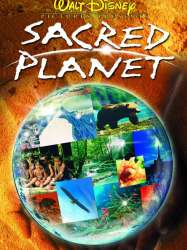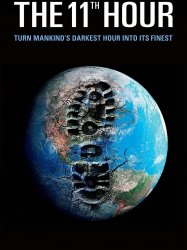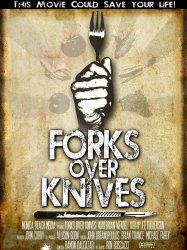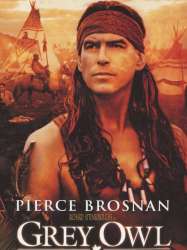Films with theme "Environmental films", sorted by revenue

The Cove (2009)
, 1h27Origin USA
Genres Documentary, Crime
Themes Films about animals, Environmental films, Seafaring films, Transport films, Cétacé, Documentary films about animal rights, Documentary films about law, Documentary films about environmental issues, Political films, Documentary films about nature, Mise en scène d'un cétacé
Actors Hayden Panettiere, Isabel Lucas, Louie Psihoyos
The film follows former dolphin trainer and activist Ric O'Barry's quest to document the dolphin hunting operations in Taiji, Wakayama, Japan. In the 1960s, O'Barry helped capture and train the five wild dolphins who shared the role of "Flipper" in the hit television series of the same name. The show, very popular, fueled widespread public adoration of dolphins, influencing the development of marine parks that included dolphins in their attractions. After one of the dolphins, in O'Barry's opinion, committed a form of suicide in his arms by closing her blowhole voluntarily in order to suffocate, O'Barry came to see the dolphin's captivity and the dolphin capture industry as a curse, not a blessing. Days later, he was arrested off the island of Bimini, attempting to cut a hole in the sea pen in order to set free a captured dolphin. Since then, according to the film, O'Barry has dedicated himself full-time as an advocate on behalf of dolphins around the world.

Man-Thing (2005)
, 1h37Directed by Brett Leonard
Origin USA
Genres Science fiction, Fantastic, Fantasy, Action, Adventure, Horror
Themes Films about animals, Films about education, Environmental films, Films about racism, Natural horror films, Giant monster films, Superhero films, Super-héros inspiré de comics, Disaster films
Actors Matthew Le Nevez, Rachael Taylor, Jack Thompson, Conan Stevens, Rawiri Paratene, Alex O'Loughlin
At Dark Waters, a Native American sacred land containing an enigmatic swamp spirit, a teenager is murdered by a plant-like monster. The following day, young replacement sheriff Kyle Williams reaches Bywater and meets with deputy sheriff Fraser, who tells him the previous sheriff is among 47 missing persons since oil tycoon Fred Schist bought the ancient tribal lands from shaman and Seminole chieftain Ted Sallis, the first to disappear. Schist claimed Sallis had sold legally and escaped with the money, and asked the sheriff for help: Local protestors opposed his perfectly legal activities, and mestizo scoundrel Renee Laroque was sabotaging his facilities. Williams investigated this while trying to find an explanation for the missing people, some of which were found brutally murdered with plants growing from inside their bodies. Photographer Mike Ploog and shaman Pete Horn tell Williams local legends about the guardian spirit, suggesting that it could be real.

Sacred Planet (2004)
, 40minutesOrigin USA
Genres Documentary
Themes Environmental films, Documentary films about environmental issues, Children's films
Actors Robert Redford
Partez en voyage pour voir des lieux parmi les plus beaux et les plus exotiques au monde. Une technologie dernier cri nous offre des images exceptionnelles de peuples indigènes, d'animaux uniques et de paysages spectaculaires inaccessibles à la plupart d'entre nous. Sur une synthèse étonnante de musique acoustique contemporaine et de musiques du monde, cette expérience visuelle et sonore amènera chacun dans un voyage individuel tissé d'imagination et d'émotion. Laissez ce spectacle étonnant vous ouvrir la porte vers les mystères et la beauté magique de la planète qui est notre foyer à tous.

The 11th Hour (2007)
, 1h32Origin USA
Genres Drama, Documentary, Crime
Themes Environmental films, Documentary films about environmental issues, Disaster films
Actors Leonardo DiCaprio
With contributions from over 50 politicians, scientists, and environmental activists, including former Soviet leader Mikhail Gorbachev, physicist Stephen Hawking, Nobel Prize winner Wangari Maathai, and journalist Armand Betscher, Paul Hawken, the film documents the grave problems facing the planet's life systems. Global warming, deforestation, mass species extinction, and depletion of the oceans' habitats are all addressed. The film's premise is that the future of humanity is in jeopardy.

Up the Yangtze (2007)
, 1h33Directed by Yung Chang
Origin Canada
Genres Documentary
Themes Environmental films, Documentary films about environmental issues, Documentary films about politics, Documentary films about technology, Political films
Actors Yung Chang
The setting of the film is a riverboat cruise ship floating up the Yangtze river. Two young people are the focus of the film as they work aboard the ship. One is a sixteen-year-old girl from a particularly poor family living on the banks of the Yangtze near Fengdu, named "Cindy" Yu Shui. She is followed as she leaves her family to work on one of the cruise ships serving wealthy western tourists at the same time as her family is being forced from their home due to the flooding that accompanied the building of the dam. The film shows her acclimatization to the consumer economy of tourism as well as modern technology of the cruise ships, juxtaposed with her family and other older citizens who are displaced from a rural lifestyle to cities where they must pay for the vegetables they used to grow on their own.

Forks Over Knives (2011)
, 1h36Origin USA
Genres Documentary
Themes Films about animals, Cooking films, Environmental films, Documentaire sur la cuisine, Documentary films about animal rights, Documentary films about law, Documentary films about environmental issues, Documentaire sur la malbouffe, Documentary films about health care, Political films, Documentary films about nature
À travers un examen des carrières du médecin américain Caldwell Esselstyn et du professeur de biochimie nutritionnelle T. Colin Campbell , Forks over Knives suggère que « l'évolution de beaucoup, sinon toutes, les maladies dégénératives qui nous affligent peut être contrôlée, voire inversée, en rejetant notre alimentation actuelle basée sur les aliments transformés et d'origine animale. » Il fournit aussi une vue d'ensemble du projet China-Cornell-Oxford, long de 20 ans, qui mena aux trouvailles du professeur Campbell, esquissé dans son livre, The China Study (2005). Il y suggère que maladie cardiaque, diabète, obésité, et cancer peuvent être liés au régime alimentaire occidental d'aliments transformés et d'origine animale (y compris les produits laitiers).

Grey Owl (1999)
, 1h57Directed by Richard Attenborough
Origin United-kingdom
Genres Drama, Biography, Action, Romance, Western
Themes Environmental films
Actors Pierce Brosnan, Vlasta Vrána, Jimmy Herman, David Fox, Serge Houde, Stephanie Cole
Archibald Belaney (Brosnan) was a British man who grew up fascinated with Native American culture—so much so that in the early 1900s he left the United Kingdom of Great Britain and Ireland for Canada, where he reinvented himself as Archie Grey Owl and lived in the wild as a North American Indian trapper. Eventually, Belaney becomes an environmentalist after renouncing trapping and hunting.

White God (2014)
, 1h59Directed by Kornél Mundruczó
Origin Hongrie
Genres Drama
Themes Films about animals, Environmental films, Films about dogs, Political films, Mise en scène d'un mammifère
Actors Sándor Zsótér, Kornél Mundruczó, Orsolya Tóth, János Derzsi, Péter Gothár
The film follows the mixed-breed dog Hagen, who moves with his 13-year old guardian Lili into the home of Lili's estranged father. Unwilling to pay a harsh "mongrel" fine imposed by the government, Lili's father abandons Hagen. Determined to find Lili again, Hagen soon attracts a pack of 250 half-breed followers who start an organised uprising against their human oppressors.

Safe (1995)
, 1h59Directed by Todd Haynes
Origin USA
Genres Drama, Thriller
Themes Environmental films, Medical-themed films, Films about religion, Films about psychiatry
Actors Julianne Moore, Peter Friedman, Xander Berkeley, James LeGros, Janel Moloney, Steven Gilborn
Set in an affluent neighbourhood of the San Fernando Valley in 1987, the film recounts the life of a seemingly unremarkable homemaker, Carol White (Julianne Moore) who develops multiple chemical sensitivity (MCS, also known as "Twentieth-Century Disease"). MCS is a medically controversial diagnosis in which a person develops mild to severe non-specific symptoms and believes that these symptoms are triggered by chemicals found in everyday household and industrial products.

The Plague Dogs (1982)
, 1h43Directed by Martin Rosen
Origin United-kingdom
Genres Drama, Science fiction, Fantasy, Adventure, Animation
Themes Films about animals, Environmental films, Film d'animation mettant en scène un animal, Films about dogs, Political films, Mise en scène d'un mammifère
Actors John Hurt, Christopher Benjamin, James Bolam, Nigel Hawthorne, Warren Mitchell, Bernard Hepton
Rowf (a Labrador-mix) and Snitter (a smooth fox terrier) are two of many dogs used for experimental purposes at an animal research facility in the Lake District of north-western England. Snitter has had his brain experimented upon while Rowf has been drowned and resuscitated repeatedly. One evening, Snitter squeezes under his cage and into Rowf's, where they discover his cage is unlatched. Eager to escape the tortures of life inside the facility, they explore, knocking over other cages and finally sneaking into the incinerator, where they are nearly killed before escaping.

Project Nim (2011)
, 1h33Directed by James Marsh
Origin United-kingdom
Genres Documentary
Themes Films about animals, Environmental films, Documentary films about animal rights, Documentaire animalier, Documentary films about law, Documentary films about environmental issues, Films about apes, Political films, Documentary films about nature, Mise en scène d'un mammifère
The film focuses on Project Nim, a research project that was mounted to determine whether a primate raised in close contact with humans could develop a limited "language" based on American Sign Language. The project was centred on a chimpanzee named Nim Chimpsky.

Goodbye to Language (2014)
, 1h10Directed by Jean-Luc Godard
Origin France
Genres Drama
Themes Films about animals, Environmental films, Politique, Films about sexuality, Films about dogs, Political films
Actors Jean-Luc Godard, Zoé Bruneau
"The idea is simple / A married woman and a single man meet / They love, they argue, fists fly / A dog strays between town and country / The seasons pass / The man and woman meet again / The dog finds itself between them / The other is in one, / the one is in the other / and they are three / The former husband shatters everything / A second film begins: / the same as the first, / and yet not / From the human race we pass to metaphor / This ends in barking / and a baby's cries / In the meantime, we will have seen people talking of the demise of the dollar, of truth in mathematics and of the death of a robin."

Countdown to Zero (2010)
, 1h30Origin USA
Genres Documentary
Themes Environmental films, Documentary films about environmental issues, Documentary films about war, Documentary films about historical events, Documentary films about nuclear technology, Documentary films about politics, Documentary films about technology, Political films
Actors Gary Oldman

Snoopy, Come Home (1972)
, 1h20Directed by Bill Meléndez
Origin USA
Genres Comedy-drama, Musical, Animation
Themes Films about animals, Films about children, Environmental films, Films about music and musicians, Films about dogs, Musical films, Political films, Buddy films, Children's films, Mise en scène d'un mammifère
Actors Stephen Shea, Christopher DeFaria, Linda Ercoli, Bill Meléndez
Snoopy and the rest of the Peanuts gang go to the beach for the day. Once there, Snoopy promises to go back to the beach the next day to meet up with Peppermint Patty. After Charlie Brown has gone home to play Monopoly with the others, he notices Snoopy is late and remarks he is tired of Snoopy being late. The next day, Snoopy is thrown off the beach due to a new "No Dogs Allowed on this beach" rule (thus setting a running gag in the film). Then Snoopy gets thrown out of a library due to another "No Dogs Allowed in library" rule. He then gets into a fight with Linus over his blanket, and later beats Lucy in a boxing match.

Sweetgrass (2010)
, 1h41Origin USA
Genres Documentary, Adventure, Western
Themes Films about animals, Environmental films, Documentary films about business, Documentary films about environmental issues
Durant l'été 2003, un groupe de bergers à la tête d'un troupeau de moutons traverse les montagnes du Montana, à l'extrême Nord-Ouest des Etats-Unis. Sur 300 km de vallées verdoyantes et de plaines enneigées à perte de vue, les bergers acheminent tant bien que mal les centaines de moutons. Mais en cette paisible contrée rodent loups et ours.
 Connection
Connection